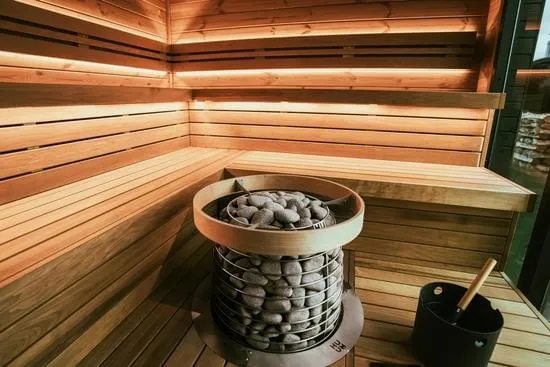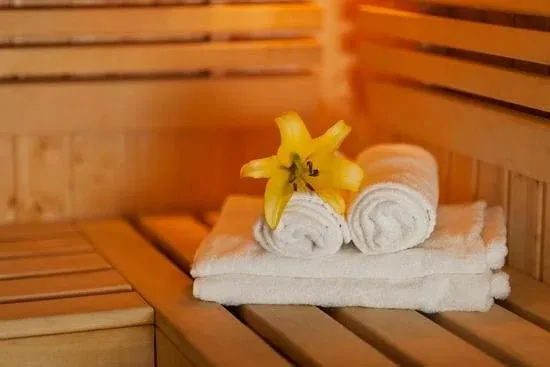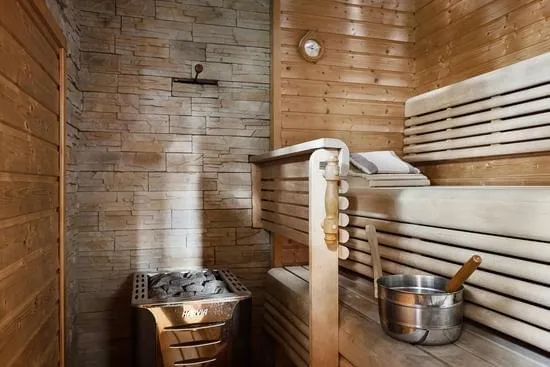Indoor Sauna Maintenance Guide: Keep Your Sauna Perfect

Your indoor sauna represents a significant investment in your health and home. Whether you spent $500 on a portable unit or $5,000 on a premium cabinet, proper maintenance ensures you'll enjoy maximum benefits for years to come. After overseeing maintenance on hundreds of saunas—from home units to commercial installations—I've learned that a little preventive care goes a long way.
In this comprehensive guide, I'll share everything you need to know about maintaining your indoor sauna. From daily quick tasks to annual deep maintenance, you'll learn how to keep your sauna performing optimally, looking great, and lasting for decades. The best part? Most maintenance takes just minutes and prevents expensive repairs down the road.
Why Maintenance Matters
Proper sauna maintenance isn't just about aesthetics—it directly impacts performance, safety, and longevity.
Performance Optimization
A well-maintained sauna heats faster and more evenly, maintains consistent temperatures throughout sessions, and operates more energy-efficiently. Neglected saunas struggle to reach target temperatures, develop hot and cold spots, and consume more electricity for the same results.
Safety Assurance
Regular maintenance catches potential issues before they become hazards. Electrical connections can loosen over time, wood can warp and create splinter risks, mold or mildew can develop in poorly ventilated units, and heating elements can fail dangerously if not monitored. A simple inspection routine prevents these problems.
Longevity and Value Protection
Consider the math: a quality infrared sauna costs $3,000-$5,000 and should last 15-20 years with proper care. That's $150-$330 per year of use. Neglect that same sauna and it might fail after 5-7 years, increasing your annual cost to $428-$1,000. The difference? Maybe 30 minutes of maintenance monthly. The return on investment for that half-hour is extraordinary.
Understanding Your Sauna Type
Maintenance needs vary based on your sauna type. Let's clarify the differences.
Infrared Saunas
Most common for home installations, infrared saunas use carbon or ceramic heating panels to emit infrared waves. For a complete overview, see our infrared sauna guide.
Key maintenance focuses: Heating panel inspection and cleaning, electrical connection verification, wood preservation (lower moisture than traditional), and control system functionality. Generally require less intensive maintenance than traditional saunas due to lower operating temperatures (120-140°F) and no water/steam exposure.
Traditional Saunas
Finnish-style saunas use electric or wood-fired heaters to warm rocks, which heat the air to high temperatures (150-195°F). Learn more in our comparison guide.
Key maintenance focuses: Heater and rock maintenance (rocks need replacement every 1-2 years), higher wood stress from extreme heat and humidity, ventilation system inspection, and drainage (if applicable). Traditional saunas require more intensive care due to moisture exposure from löyly (steam) and higher operating temperatures.
Portable Saunas
Fabric-enclosure units with infrared heating, detailed in our portable sauna guide.
Key maintenance focuses: Fabric cleaning and drying, frame stability checks, zipper functionality, and electrical cord integrity. Portable units require diligent moisture management to prevent mildew in fabric components.
Daily Maintenance: After Each Session
The most important maintenance happens right after you use your sauna. These quick tasks take 2-5 minutes but prevent 90% of potential problems.
Immediate Post-Session Care
Wipe Down Benches and Backrests: Use a dry towel to remove sweat and moisture from all wood surfaces. This simple step prevents staining, odor development, bacteria growth, and premature wood degradation. Focus on areas where your body made direct contact.
Leave Door Open: After wiping surfaces, prop the door open for 15-30 minutes. This allows air circulation, moisture evaporation, temperature normalization, and prevents musty odors. Many sauna owners make the mistake of closing the door immediately, trapping moisture inside—this is the primary cause of mildew and odor issues.
Check Floor Area: Sweep or wipe any sweat, water droplets, or debris from the floor. Check that floor mats or towels are removed to dry separately. Verify nothing is blocking ventilation areas.
Verify Controls Are Off: Double-check that the unit is completely powered down. Some models have standby modes that continue drawing minimal power. Confirming off status prevents accidental overnight operation and reduces fire risk (however small).

Weekly Maintenance Routine
Set aside 10-15 minutes weekly for slightly deeper cleaning and inspection.
Interior Cleaning
Vacuum Thoroughly: Use a handheld vacuum or soft brush attachment to clean floor and corners, bench undersides where dust accumulates, ventilation openings, and behind heating elements (carefully, without touching). Dust and debris can affect heat distribution and air quality.
Wipe Walls and Ceiling: Use a slightly damp (not wet) microfiber cloth to wipe down walls. Work from top to bottom to catch falling dust. Pay attention to corners where condensation might accumulate. For infrared saunas, this is usually quick—just light dust removal. Traditional saunas may need more attention depending on humidity levels.
Clean Glass Door: Mix equal parts water and white vinegar in a spray bottle. Spray on glass (avoiding wood frames). Wipe with a clean microfiber cloth until streak-free. Clean both interior and exterior sides. Clear glass ensures you can monitor conditions inside and maintains aesthetics.
Inspection Points
Heating Elements (Visual Only): Look at heating panels or heaters without touching them. Check for visible damage (cracks, discoloration, warping), loose connections or hanging wires, and unusual residue or buildup. Note any issues for professional attention—don't attempt repairs yourself unless qualified.
Wood Condition: Inspect benches for cracks, splits, or splintering, any warping or separation of joints, discoloration that might indicate moisture damage, and tightness of fasteners or brackets. Address small issues immediately before they become major problems.
Door and Hinges: Test door operation—should open and close smoothly. Check hinge tightness (tighten loose screws). Verify door seal integrity if your model has weather stripping. Ensure latch mechanism works properly.
Monthly Deep Maintenance
Once monthly, dedicate 30-45 minutes to comprehensive maintenance.
Deep Cleaning Process
Wood Treatment: Most sauna wood requires minimal treatment, but monthly care keeps it beautiful. Create a gentle cleaning solution: 1 gallon warm water plus 2 tablespoons mild, fragrance-free dish soap. Use a soft sponge or cloth dampened (not soaked) in solution. Clean all wood surfaces following the grain. Immediately dry with clean towels. Allow 1-2 hours with door open to fully air dry.
Important wood cleaning rules: Never use harsh chemicals, bleach, or ammonia, avoid abrasive scrubbers that scratch wood, don't oversaturate wood with water, and never apply oils or sealants unless manufacturer specifically recommends (can release fumes when heated).
Stain Removal: For stubborn stains or discoloration, very fine sandpaper (220-grit or finer) can be used gently on affected areas. Sand with the grain, lightly and minimally. Vacuum dust immediately. Some manufacturers sell specialized sauna cleaners—follow instructions carefully.
Electrical System Check
Before doing any electrical inspection, unplug the sauna or switch off the dedicated circuit breaker.
Visual inspection (no touching live parts): verify all connections appear secure, look for any signs of overheating (discoloration, melting), check wire insulation for damage or fraying, and ensure control panel displays function correctly. If anything looks suspicious, contact a qualified electrician. Electrical issues in saunas require professional attention—the combination of heat and electricity demands respect.
Ventilation System
Proper ventilation is critical for sauna performance and longevity. Monthly checks include verifying intake vents are clear of obstructions, checking that exhaust vents function properly, cleaning vent covers with vacuum and damp cloth, and ensuring room ventilation (bathroom fans, windows) works if your sauna relies on external ventilation.
Test Run
After cleaning and inspection, perform a test run: Power on the sauna, set to normal operating temperature, allow to heat for full time cycle (15-30 minutes), verify temperature reaches and maintains set point, check that heating is even (no cold spots), listen for any unusual sounds, and note any unusual odors (could indicate debris on heaters or electrical issues).
Seasonal and Annual Maintenance
Some tasks need attention just once or twice yearly.
Bi-Annual Tasks
Deep Wood Treatment (If Needed): Cedar and hemlock saunas generally need no finishing. However, if your wood shows significant drying or wear, consult your manufacturer about approved wood treatments. Some recommend light sanding and application of specialized sauna wood oils—but only use products specifically formulated for saunas that won't emit fumes when heated.
Hardware Tightening: Temperature cycles cause expansion and contraction that can loosen fasteners over time. Check and tighten bench brackets, door hinges, light fixtures, heating element mounting, and control panel attachment. Use appropriate tools and don't overtighten (can crack wood or strip threads).
Annual Professional Service
Even with excellent DIY maintenance, consider professional inspection annually. Professionals can thoroughly test electrical systems under load, inspect heating elements beyond visual checks, verify correct operating temperatures and power consumption, check structural integrity comprehensively, and catch issues invisible to untrained eyes.
Cost: $100-$300 typically for a thorough inspection and minor adjustments. This annual investment prevents expensive repairs and extends sauna life significantly.
Special Maintenance for Traditional Saunas
If you have a traditional Finnish sauna with rocks and water, additional maintenance applies.
Sauna Rock Care
Rock Inspection (Every 6 Months): Check rocks for cracks, crumbling, or excessive discoloration. Remove damaged rocks—they heat unevenly and can harbor bacteria. Rearrange remaining rocks periodically to ensure even wear.
Rock Replacement (Every 1-2 Years): Sauna rocks deteriorate over time from extreme heat cycles and water exposure. When rocks show significant cracking or crumbling (typically after 1-2 years of regular use), purchase replacement rocks specifically designed for saunas (usually igneous rocks like peridotite or olivine diabase). Follow manufacturer guidelines for quantity and placement. Cost: $30-$80 for a typical heater capacity.
Drainage Maintenance
If your traditional sauna has a floor drain, monthly cleaning prevents clogs and odors. Pour water down drain to check flow. Use a drain snake or enzyme cleaner if slow. Flush with hot water and mild cleaner. Ensure drain trap maintains water seal.
Higher Humidity Management
Traditional saunas with löyly (steam from water on rocks) expose wood to more moisture. Extra care includes more aggressive ventilation after use (30-60 minutes with door open), use of dehumidifiers in surrounding room if humidity is problematic, and more frequent wood inspections for moisture damage or mildew.
Troubleshooting Common Issues
Address problems promptly to prevent escalation.
Odor Problems
Musty or Mildew Smell: Indicates moisture isn't evaporating properly. Solutions include improving ventilation (leave door open longer after use), using a small fan to increase air circulation, checking for leaks or condensation sources, and cleaning with vinegar solution (1:1 water and white vinegar) which kills mildew naturally. For persistent odors, remove and clean all removable components, and consider professional deep cleaning.
Burning or Chemical Smell: Potentially serious—could indicate electrical issues or contamination on heating elements. Power off immediately and inspect for debris on heaters (dust or residue can burn when heated), loose electrical connections creating resistance and heat, and malfunctioning components. If source isn't obvious and easily cleaned debris, call a professional before using again.
Heating Problems
Sauna Won't Heat or Heats Slowly: Potential causes include tripped circuit breaker (check electrical panel), timer settings (verify not in off-cycle), heating element failure (requires professional replacement), and thermostat malfunction (may need recalibration or replacement). For infrared saunas, also check that panels are clean and unobstructed.
Uneven Heating: If certain areas remain cold, check for obstructions blocking heaters or vents, malfunctioning heating panels or elements, and poor insulation (air leaks around door or panels). Uneven heating often improves after ensuring all vents are clear and door seals properly.
Wood Discoloration or Staining
Yellow or Brown Stains: Usually from sweat, oils, or minerals in water (traditional saunas). Clean with mild soap solution and soft brush, sand lightly with fine-grit sandpaper if stain persists, and prevent future staining by using towels to sit on consistently.
Black or Green Spots: Indicates mold or mildew—a moisture problem requiring immediate attention. Clean affected areas with vinegar solution, improve ventilation dramatically, consider using a dehumidifier in the room, and if mold is extensive, consult a professional for remediation. Mold in saunas is rare but serious when it occurs.
Door Issues
Door Won't Close Properly: Could be hinges have loosened (tighten screws), wood has warped from moisture (may need adjustment or replacement), or latch mechanism needs adjustment. A poorly closing door causes heat loss and energy waste—address promptly.
Glass Fogging: Some fogging during use is normal due to temperature differential. Excessive permanent fogging might indicate seal failure or trapped moisture between glass panes (if double-pane). Check door seals and replace if damaged.
Products and Tools for Sauna Maintenance
Having the right supplies makes maintenance easier and more effective.
Essential Cleaning Supplies
- Microfiber cloths ($10-15 for a set) - Soft, lint-free, perfect for wood and glass
- Spray bottles ($5-10) - For vinegar solution and water mixtures
- Soft-bristle brush ($8-12) - For gentle scrubbing without scratching
- Handheld vacuum ($30-60) - Quick cleanup of dust and debris
- Bucket and sponges ($10-15) - For larger cleaning jobs
- White vinegar ($5) - Natural cleaner and mildew fighter
- Mild dish soap ($4-6) - Fragrance-free variety for wood cleaning
Specialized Sauna Products
- Sauna wood cleaner ($15-30) - If you prefer commercial products over DIY solutions
- Sauna scent oils ($10-25) - Optional for traditional saunas (add to water)
- Fine-grit sandpaper ($8-15) - 220-grit or finer for minor wood restoration
- Wood conditioner ($20-40) - Only if manufacturer-approved for your wood type
Tools for Inspection and Repair
- Screwdriver set ($15-30) - For tightening hardware
- Flashlight ($10-25) - For inspecting dark corners and under benches
- Multimeter ($25-50) - For basic electrical testing (if comfortable)
- Level ($10-20) - To check if sauna remains properly aligned
Total initial investment: $150-$300 for a comprehensive maintenance kit that will last years.
Maintenance Schedule Template
Here's a simple schedule to follow:
| Frequency | Task | Time Required |
|---|---|---|
| After Every Use | Wipe benches, leave door open 15-30 min | 2-5 minutes |
| Weekly | Vacuum, clean glass, inspect basics | 10-15 minutes |
| Monthly | Deep clean wood, check electrical, test run | 30-45 minutes |
| Every 6 Months | Hardware tightening, rock inspection (traditional) | 45-60 minutes |
| Annually | Professional inspection and service | 1-2 hours (professional) |
Total DIY time investment: About 2-3 hours monthly for complete maintenance. This modest investment protects thousands of dollars in equipment and ensures consistent performance.
Extending Your Sauna's Lifespan
Beyond regular maintenance, certain practices dramatically extend sauna longevity.
Use Towels Consistently
Always sit and lean on towels, never directly on wood. This single habit prevents 80% of wood staining and deterioration. Sweat contains salts and acids that gradually degrade wood. Towels create a protective barrier while being easy to wash.
Shower Before Sessions
Showering before sauna use removes skin oils, lotions, and dirt that would otherwise contaminate the sauna. This reduces cleaning needs and prevents buildup. It's a common practice in traditional sauna cultures—and there's practical wisdom in the tradition.
Control Environmental Factors
If possible, maintain the room where your sauna is located at moderate humidity (30-50%). Excessive humidity stresses wood and promotes mold, while very dry air can cause wood to crack. Use a dehumidifier or humidifier as needed to maintain the ideal range.
Address Issues Promptly
Small problems become big problems when ignored. A loose screw becomes a cracked board. A small stain becomes pervasive discoloration. A slight odor becomes persistent mildew. When you notice something off, address it within a few days, not a few months.
Follow Manufacturer Guidelines
Your sauna manual contains specific recommendations for your model. Wood types have different care needs, electrical systems have particular requirements, and warranty coverage often depends on following prescribed maintenance. When manufacturer guidance conflicts with generic advice (including this article), follow the manufacturer.
When to Call a Professional
DIY maintenance handles most needs, but some situations require professional expertise.
Definitely Call a Pro For:
- Any electrical issues beyond changing a light bulb
- Heating element replacement or repair
- Structural damage (cracked panels, broken joints)
- Extensive mold remediation
- Control system malfunctions
- Door or window replacement
- Any issue covered by active warranty (DIY repairs may void coverage)
Consider Professional Help For:
- Deep wood restoration or refinishing
- Upgrading components (lights, controls, heaters)
- Annual comprehensive inspections
- Persistent problems you can't diagnose
Professional service costs $100-$300 for inspections, $150-$500+ for repairs depending on complexity. While this seems expensive, it's far less than premature sauna replacement due to neglect.
Cost of Maintenance vs. Cost of Neglect
Let's examine the financial reality.
Annual Maintenance Costs
- Cleaning supplies: $50-$100
- Professional inspection: $100-$300
- Minor repairs/replacements: $50-$150
- Total annual cost: $200-$550
Cost of Neglect
A neglected $4,000 sauna might last 5-7 years before major issues require expensive repairs or replacement. Cost per year: $571-$800. A properly maintained $4,000 sauna lasts 15-20 years. Cost per year: $200-$265. Difference: $300-$600 annually saved through maintenance. Over 20 years, that's $6,000-$12,000 in savings—enough to buy 2-3 more saunas!
The math is indisputable: maintenance dramatically reduces total cost of ownership.
Maintenance Tips for Different Home Situations
For Apartment Dwellers with Portable Saunas
Extra attention to moisture management is critical. Always dry fabric completely before storage, use a small fan to accelerate drying, and consider storing with a moisture-absorbing packet. Inspect fabric and zippers more frequently than other sauna types. Learn more about portable units in our portable sauna guide.
For Bathroom Installations
Bathroom saunas contend with higher ambient humidity. Run bathroom exhaust fan during and after use, consider a dehumidifier if bathroom humidity stays above 60%, wipe down sauna exterior if bathroom condensation accumulates on it, and be extra vigilant about mold prevention.
For Basement Saunas
Basements can have humidity and ventilation challenges. Ensure adequate ventilation in the basement generally, consider a dehumidifier for the space, check for any water infiltration that could affect the sauna, and monitor closely for musty odors that indicate moisture problems.
Final Thoughts
Maintaining your indoor sauna isn't complicated or time-consuming—it just requires consistency. The habits you establish in the first months of ownership typically continue for years. Start with good practices and they become automatic.
Think of sauna maintenance like vehicle maintenance. You wouldn't skip oil changes or tire rotations on a $30,000 car. Why would you neglect a $3,000-$5,000 wellness investment that directly impacts your health and home value? The parallel is exact: regular attention prevents expensive problems and ensures reliable performance.
I've seen saunas that look and perform like new after 15 years of use because the owners followed simple maintenance routines. I've also seen saunas become unusable after just 3-4 years due to neglect. The difference isn't luck or build quality—it's care.
Your sauna wants to serve you for decades. Give it the modest attention it requires, and you'll enjoy reliable wellness therapy that pays dividends in health, stress relief, and quality of life far exceeding any maintenance investment.
Questions about maintaining your specific sauna model? Contact us for personalized advice. And if you're still researching which sauna to buy, check out our comprehensive buying guide to find a model that fits your maintenance preferences and lifestyle.
Need Sauna Maintenance Advice?
Get expert tips tailored to your specific sauna model. We'll help you keep your investment in perfect condition.
Frequently Asked Questions
Wipe down benches after each use, vacuum weekly, do a thorough cleaning monthly, and have professional inspection annually. This routine keeps your sauna fresh and extends its lifespan significantly.
Use only mild, natural cleaners specifically designed for saunas or wood surfaces. Avoid harsh chemicals, bleach, ammonia, or abrasive cleaners which can damage wood and contaminate the air during heating.
With proper maintenance, quality infrared saunas last 15-20 years, while traditional saunas can last 20-30+ years. Portable saunas typically last 5-10 years. Regular care significantly extends lifespan.
References
- National Fire Protection Association. "Electrical Safety Standards and Maintenance"
- Wood Database. "Wood Properties and Care Guidelines"
- Consumer Product Safety Commission. "Home Sauna Safety and Maintenance"




